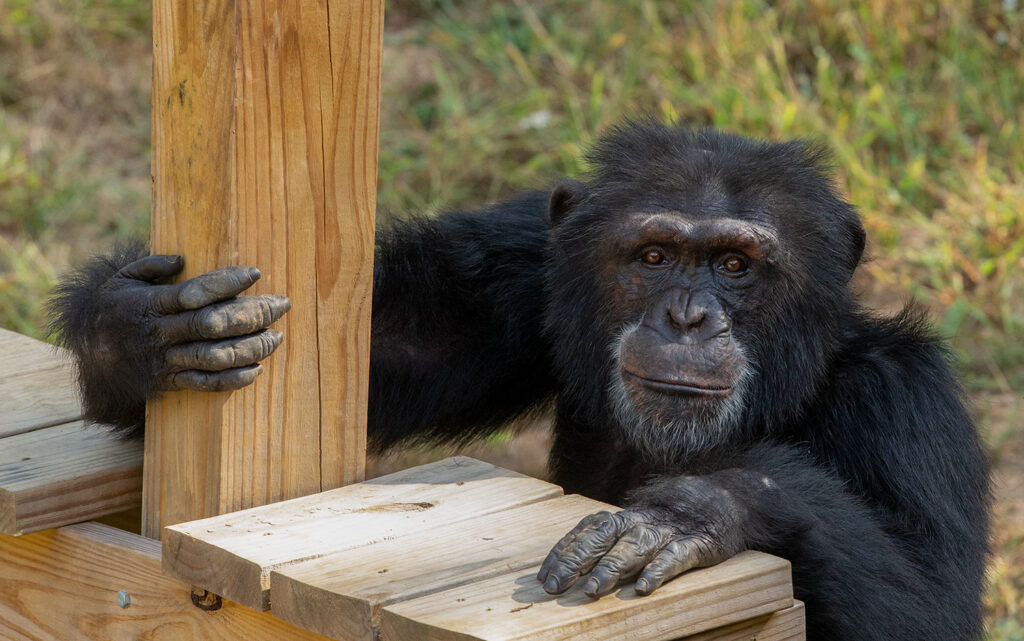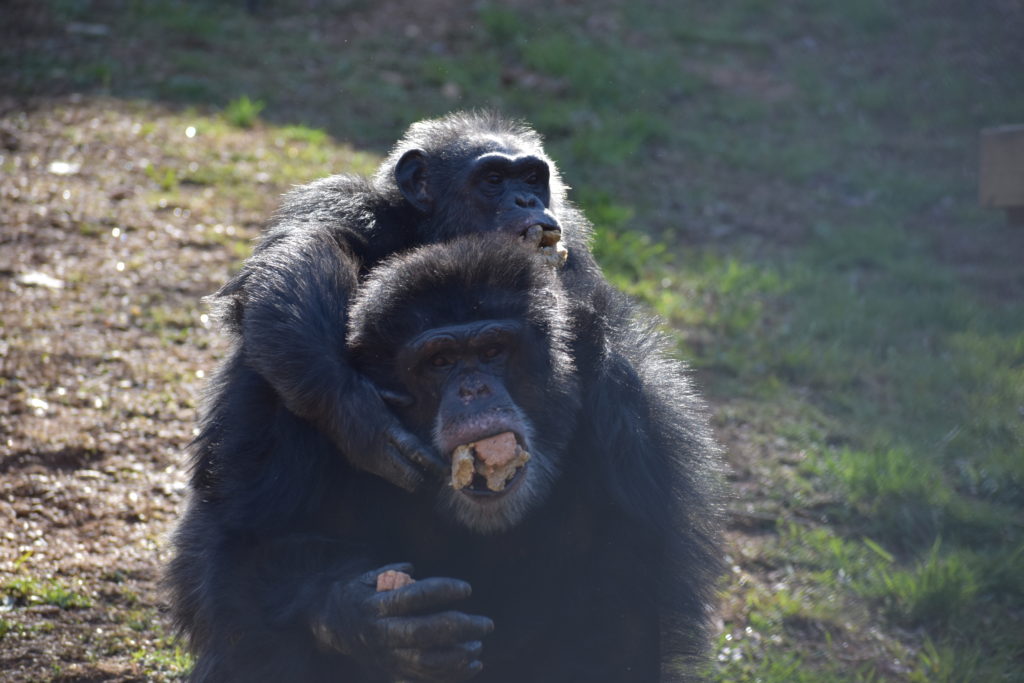
Chimp Faces: Noticing & Reading Facial Expressions

By Anna Lietman
Working around chimps, you basically develop a superpower. Seriously! Spend some time at Project Chimps and you can’t help but become skilled at reading facial expressions. And skilled at interpreting body language, too.
Importance of Watching Chimp Faces
Why? Because you have to. These tools represent one of our best metrics for understanding chimps’ moods.
Caregiver Mackenzie explains the importance of closely observing the chimps, saying, “With the chimps we have to watch very carefully to determine how they’re feeling.” Staff must develop an understanding of the chimps’ baseline body and facial expressions so they can tell when something is ‘off’.
“We’re not in their heads, so we can’t tell for certain how they’re feeling. We can draw assumptions that can be well-informed by their behavior, but paying attention to their mannerisms, their body language, and the sounds that they make—it’s how we understand how the group is functioning.”
Caregiver Mackenzie
Reading Facial Expressions of An Expressive Chimp
Chimp LB has an especially expressive face, making her caregivers’ mood-reading job easier.

Aide Mackenzie speaks affectionately about LB while informing me of her communicative prowess. “Her expressions are remarkable,” she says. Mackenzie notes her large repertoire of emotions, and then catalogues LB’s most common faces for me: she’ll furrow her brow in concentration; a droopy lip indicates playfulness; she juts her lower lip out when relaxing.
They key to reading facial expressions in LB’s case, I gather, comes from how she moves her mouth.
The majority of the time, though, LB communicates playfulness. Her humorous eyes and playfully droopy lips contrast with her groupmate Sky, who according to Mackenzie usually wears a serious expression. These observations make-up the respective ‘baseline’ attitudes of the two chimps.
Interpreting a Chimp Smile
One commonly misinterpreted facial expression is a chimp’s ‘smile.’

Surprisingly, chimpanzee smiles signify fear. When chimps bare both their top and bottom teeth, though it may look like a goofy grin, scientists have come to understand this expression as a “fear grimace.” Chimps make this face when they’re afraid, anxious, or uncertain. Contrarily, in happy moments they’ll open their mouth wide, sometimes revealing their bottom row of teeth but never the top.
Though humans have many similarities with chimps when it comes to our facial cues, our teeth-filled ‘smiles’ communicate radically different emotions.
Caregiver Perceptiveness
Since working at Project Chimps, Mackenzie and Sammie both tell me they think their knack for reading facial expressions has improved.
When I ask Mackenzie if she’s more attuned to body language and facial signals since working at Project Chimps, she responds “absolutely.”
And though Sammie says she has always found it easy to interpret human emotion based on body language, working with chimps has honed these skills. Moreover, Sammie believes chimps perceive more than most humans; they pay special attention to facial expressions, and even notice the way she moves her eyebrows. In fact, Sammie now applies what she’s learned from the chimps back to her interactions with people.
“You can talk to a chimp in a whole different way, just by looking at them a certain way or moving your eyebrows a certain way, which I think is really neat. I wish more humans were adapted to listening to body language.”
Caregiver Aide Sammie
Check out Project Chimps staff doing their best impressions of common chimp expressions in this video.

